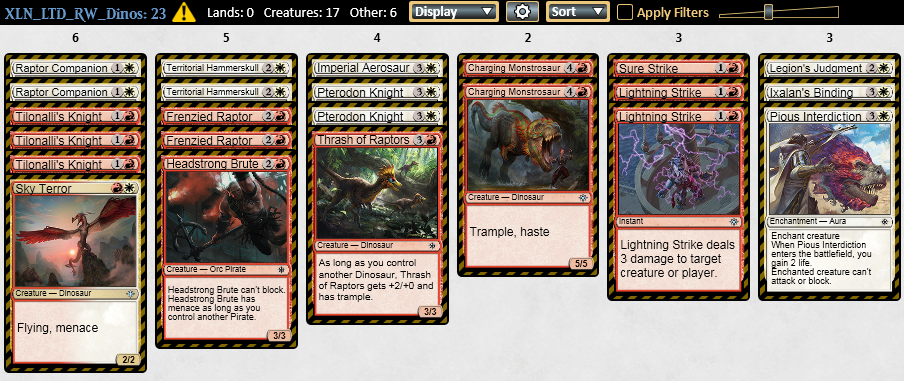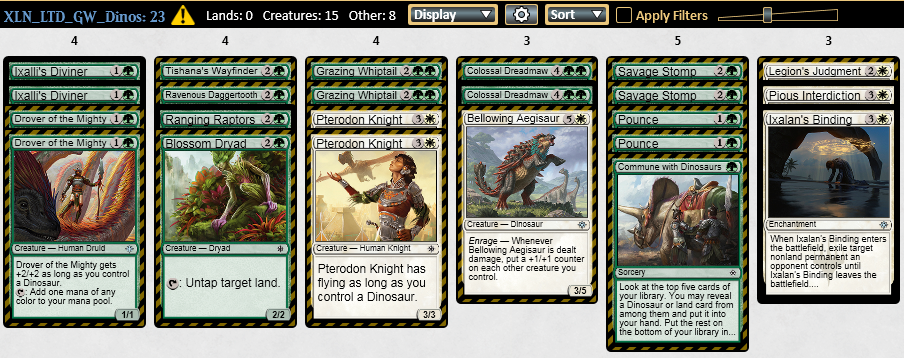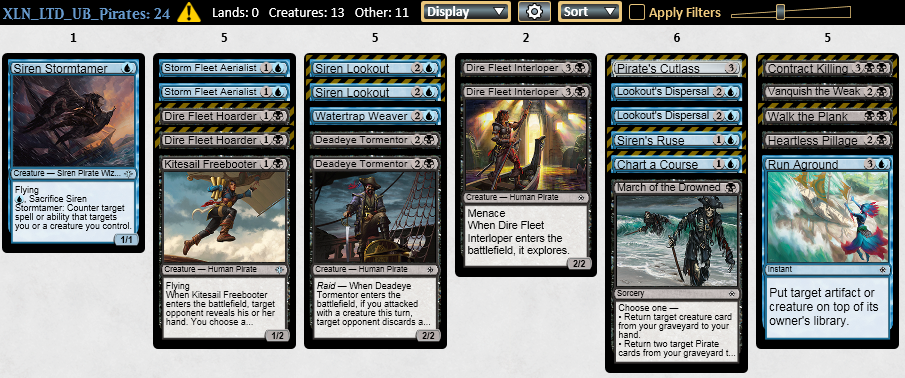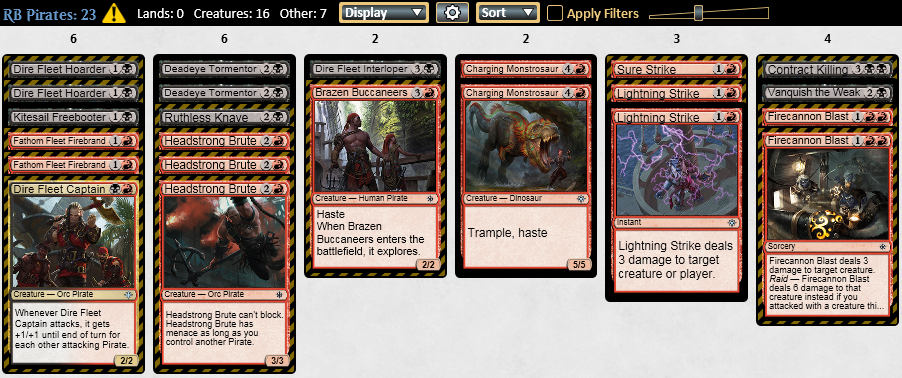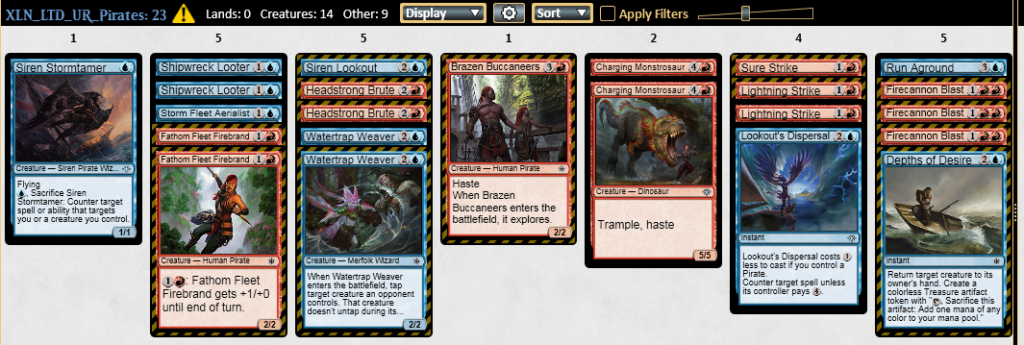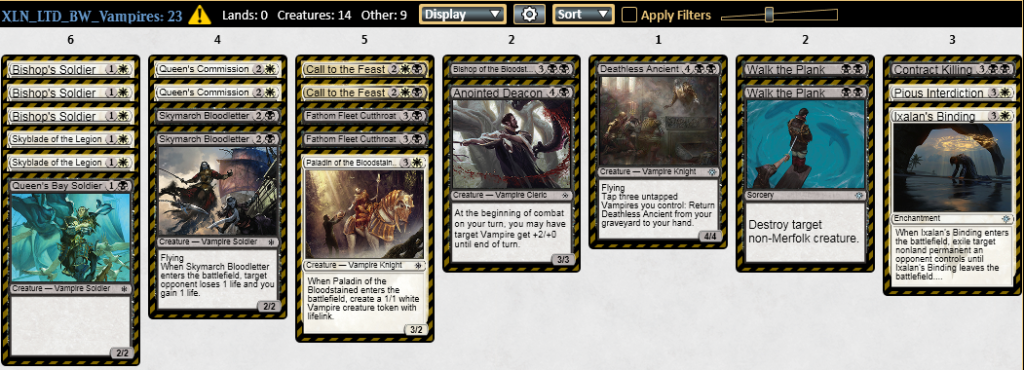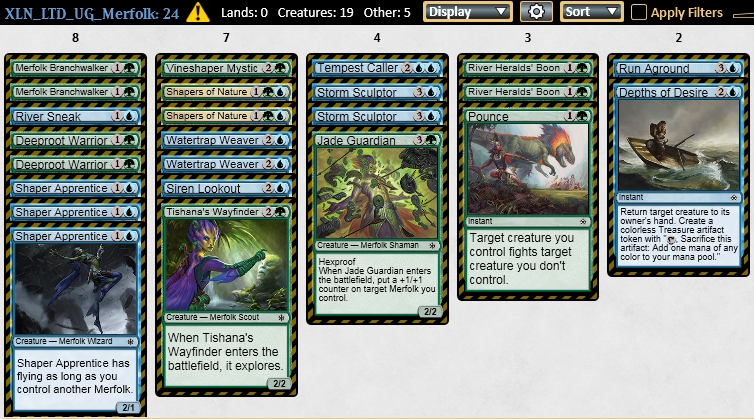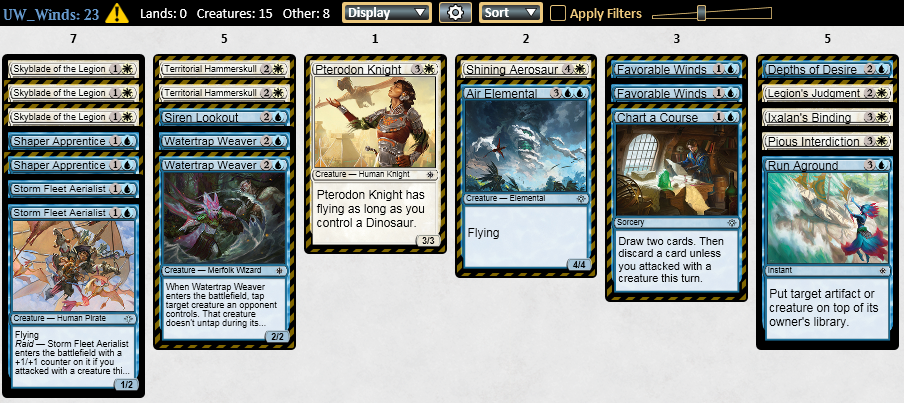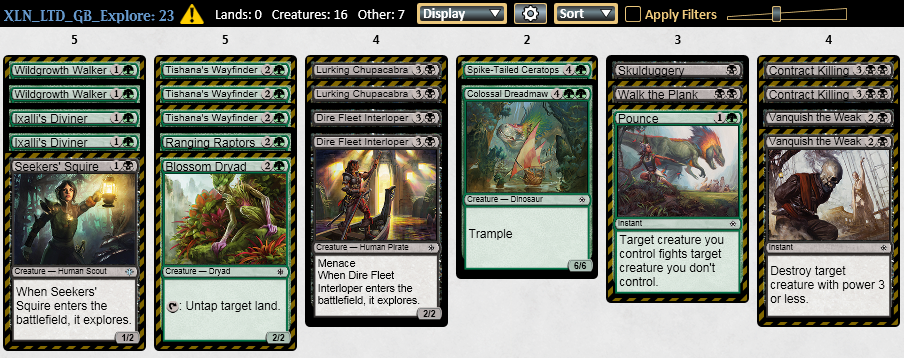In the past I’ve used my CELF-test method to review sets and explore the new limited format before set release. This time I’ll be doing something new. I’m going to shortcut the card evaluation and go straight to reviewing draft archetypes.
I’ve always envisioned creating models of the draft archetypes as the final step in the CELF-test method of set reviews. Unfortunately, in the past my set reviews have taken too long to finish and I haven’t had the time to look at the archetypes. Here I’ll start with the archetypes and make some notes on individual cards and give general thoughts on the format by the end.
Introduction to Draft Models
Draft models are what I consider to be the ideal non-rare draft deck. If you are the only drafter in an open archetype and the packs break with the right pieces for your deck the model represents what you hope your deck looks like at the end. Draft is not usually that simple so these models will usually be more streamlined and higher quality than the average draft deck. But these are the builds of each archetype that you are trying to recreate with each draft.
Draft models are a cross between limited and constructed. We’ll be constructing decks in each archetype by using the released card file. But to approximate the random distribution of cards in a pod we’ll establish a set of deckbuilding restrictions:
Use commons and uncommons only
- Rares will make decks better but they aren’t opened at a high enough rate to include them in our model.
Uncommons
- Up to 7 total uncommons.
- Up to 2 copies of two different uncommons.
- The rest of the uncommons must be singletons.
Commons
- Fill out the rest of the deck with commons.
- Up to 3 copies for one common.
- Up to 2 copies for each of four commons.
- The rest of the commons must be singletons.
Lands
- Non-basic lands in the draft are subject to the same rules. You can include multiples of these but they count against the uncommon/common slot just as any other pick would.
Typical breakdown for a completed draft model
- 4 of the best uncommons (2 copies each of two uncommons)
- 3 singleton uncommons
- 3 of the best common (3 copies of one common)
- 8 of the second tier of commons (2 copies each of four commons)
- 5 singleton commons
Draft Archetypes
I would usually look at the gold uncommons to signal how to build in each color combination. This set is unique in that only eight 2-color pairs have a gold card. GB and UW are without, so I’ll build those last.
Tribal Decks
As a tribal set, the obvious archetypes are signaled pretty loudly by the design. Merfolk, Vampires, Pirates and Dinos will be the first archetypes I look at.
Pirates and and Dinos are each in a 3-color wedge. Based on the spoiler and my limited pre-release experience I’m expecting that RW will be the aggressive Dinos and RG will be the big fatty Dinos. I’m not sure what to expect from GW yet except a mixture of the two. Similarly, RB Pirates will be aggressive while UB Pirates will be more disruptive.
RW Dinos
RW is the aggressive dino color pair with aggressive options at all parts of the curve and access to pretty good removal.
RG Dinos
RG is a more midrange dino deck. I’m not happy with the Dryads in this build now that I’ve played a few drafts, but you get the idea. The options for 2 and 3 drops are worse in RG than in RW, but going into non-dino cards would make the deck better. Merfolk offers some good aggressive and/or value 2 and 3 drops that would slot in well here.
GW Dinos
GW dinos are also midrange/rampy. GW gets access to a lot of good removal in this set, especially for dino-centric builds.
UB Pirates
This build I’ve put together is on the more aggressive end of the spectrum with hand disruption and flyers. It’s possible that UB wants to play a grindier game and can easily splash with some of the pirate cards that make treasure.
RB Pirates
RB pirates looks like a more focused archetype than pirates. The curve here is much better and the removal is quite good. RB gets two of the best commons in Firecannon Blast and Vanquish the Weak.
UR Pirates
UR also gets a lot of interactive spells while having a good curve to clock the opponent. UR and RB both look superior to UB from a 2-color perspective. UR trades some of RB’s hard removal for bounce and more evasive threats. UB looks like it’ll have to be grindier and splash more to compete with the red-based pirate decks.
BW Vampires
This deck looks weak to me. I tried putting all the best cards that same Vampire on them in one deck and I just don’t see the incentive for doing so. Unless you get some rares that give you a reason to play Vampires I think the deck looks underpowered. There are a lot of tokens here without much payoff (no lords, no mass pump spells). A BW good stuff deck is still possible, but I don’t see making a deck around the tribal synergies.
UG Merfolk
Merfolk on the other hand appear to have the nut synergy deck. The curve is deep and there are a few merfolk-only payoff cards (River Herald’s Boon, Vineshaprer Mystic) meaning that if the archetype is open you can really get hooked up with great cards for your deck that nobody else wants.
Non-Tribal Decks
UW and GB don’t technically have a gold common. But after building decks for each of these color pairs I think they secretly do. Favorable Winds is at its best in UW and Wildgrowth Walker is at its best in GB.
UW Favorable Winds
Not a lot to say here. Pretty classic flyers strategy. I do think the deck has enough tools to be real and Watertrap Weaver is a big reason why since it makes racing possible.
GB Explore
GB is a value midrange deck. The key uncommons for the archetype point toward explore synergies. I think it’s also to build this as the core of a multi-color ramp with green’s ramp and black’s solid removal.
Ramp and Multi-color Decks
Unfortunately, I didn’t take the time to build examples of these decks. One reason is I ran out of time, but these strategies are also build around rares so it doesn’t make a lot of sense to build versions without them.
The combination of Blossom Dryad and New Horizons[/c] alone is enough to power a strong ramp archetype.
UB will also be able to enable some value control decks that splash off of treasures.
Conclusion
In a tribal set it’s easier to define the common archetypes. In practice, drafts rarely go as smoothly as the models above show. If you get lucky, you might first pick a good tribal card and if that tribe happens to be open you’ll end up with a great deck.
More often than not you’ll make first picks and if that tribe isn’t open you have to be more willing to abandon them. Finding the right lane to be in is even more important than normal when there’s less overlap between which cards each individual archetype wants.
Finding generically powerful cards in your opening picks adds a lot of value because they can flexibly slot into many decks. I noticed building the models above that no matter what color pair I was building, I also wanted cards like Lightning Strike, Charging Monstrosaur, Ixalan’s Binding and Walk the Plank. Starting your draft off with one of these powerful yet flexible cards is a real advantage.
We’ll get an interesting look at the format this weekend with team sealed at GP Providence. This will be my first ever team events, but I’m told that team sealed decks look a lot like draft decks so I’m to build something close to some of the models above. Good luck and see you there to anyone else competing!
Follow me on Twitter @thenatewalker.
Follow my Twitch channel: www.twitch.tv/n_walker. I stream a lot of limited, some standard/modern.
Or reach me in the comments below!

